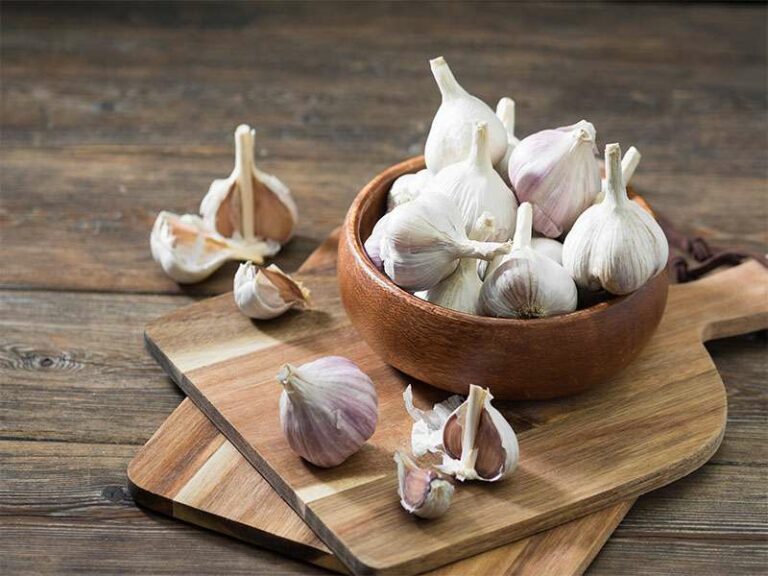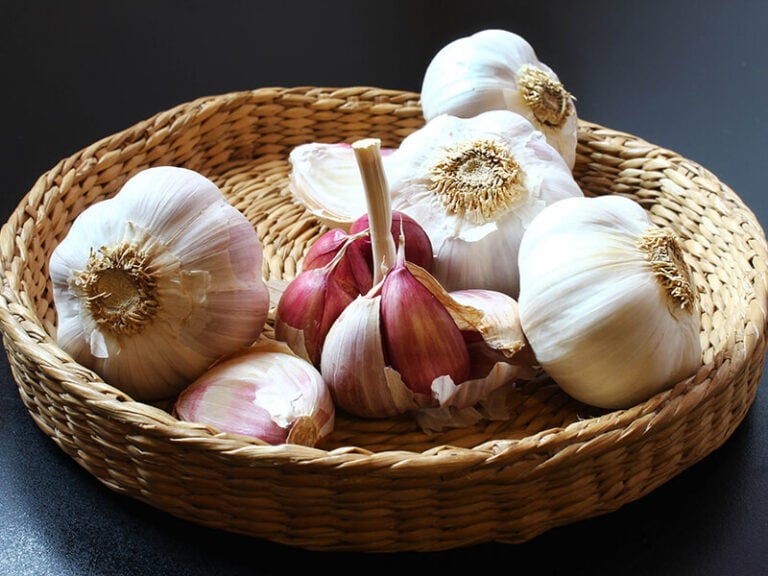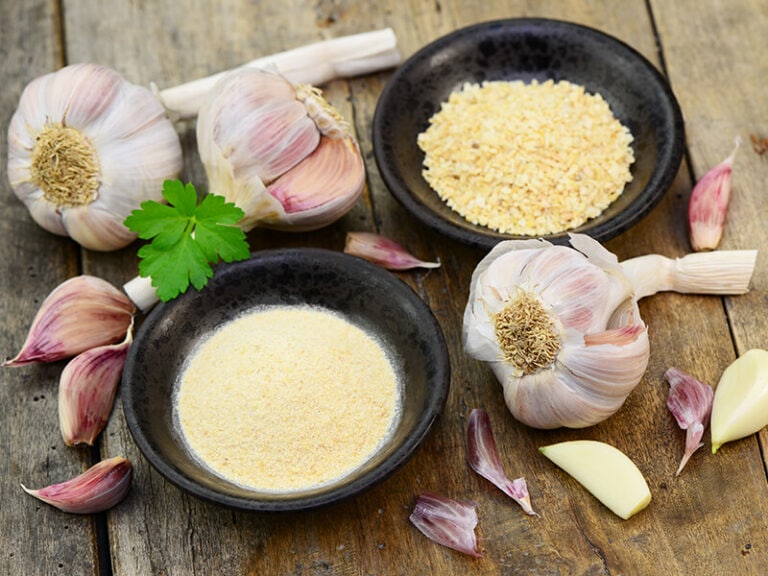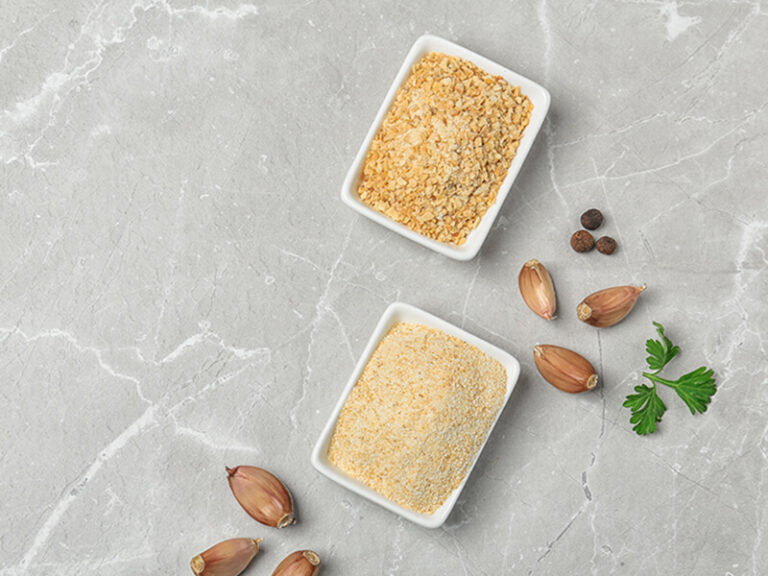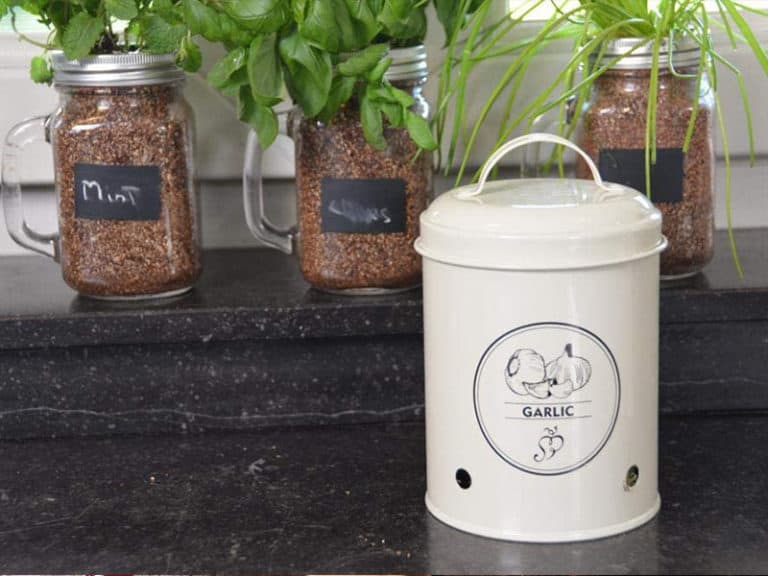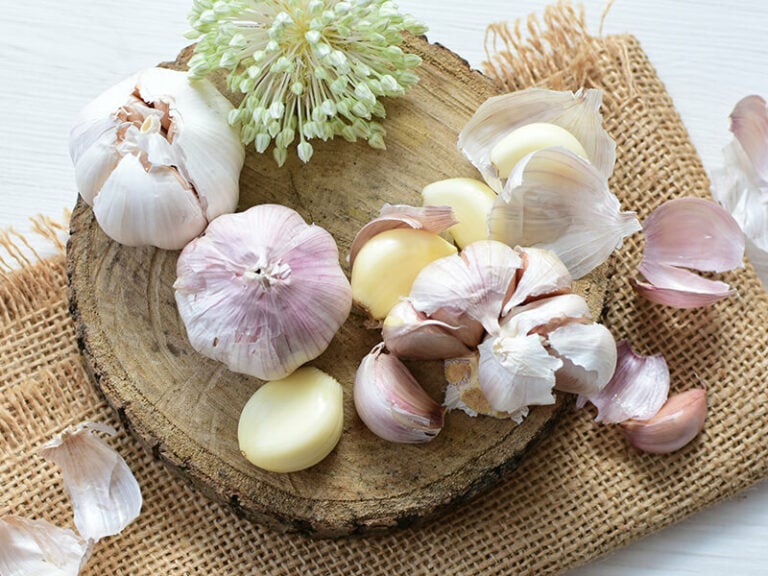Fresh garlic vs garlic powder vs granulated garlic, how are they different in cooking? Not many people can answer this, but everyone knows that these three garlic products provide the signature garlic flavor to many recipes.
Using garlic will enhance your dishes’ taste with another layer of flavor. With the proper knowledge of the combination, garlic products will help you step up your cooking skills by a whole lot.
Without further delay, let’s explore the various uses of this wonderful flavoring and the difference between fresh garlic, garlic powder, and granulated garlic.
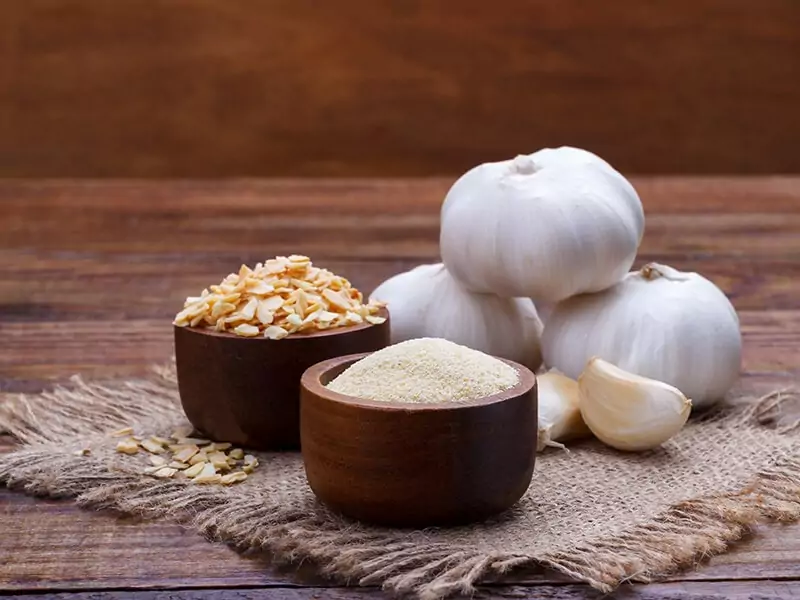
The Story Of Garlic
Garlic is an indispensable part of many culinary cultures in the world. It’s one of the most popular and vital flavorings in many recipes. People have learned to use garlic for some thousand years.
From being a remedial medicine to savory spices in cooking, garlic has facilitated human life in many respects. However, the origin of garlic is still a mystery.
The Origin Of Garlic
Garlic (Allium sativum) is a flowering plant native to Middle Asia. Some beliefs say it originated in West China. Sumerians (2600-2100 BC) are thought to have found the utility of garlic in medicine, and then they brought the garlic to China. (1)
Garlic is an herb, spice, and even vegetable. It thrives in a temperate climate throughout the years without special cultivation methods.
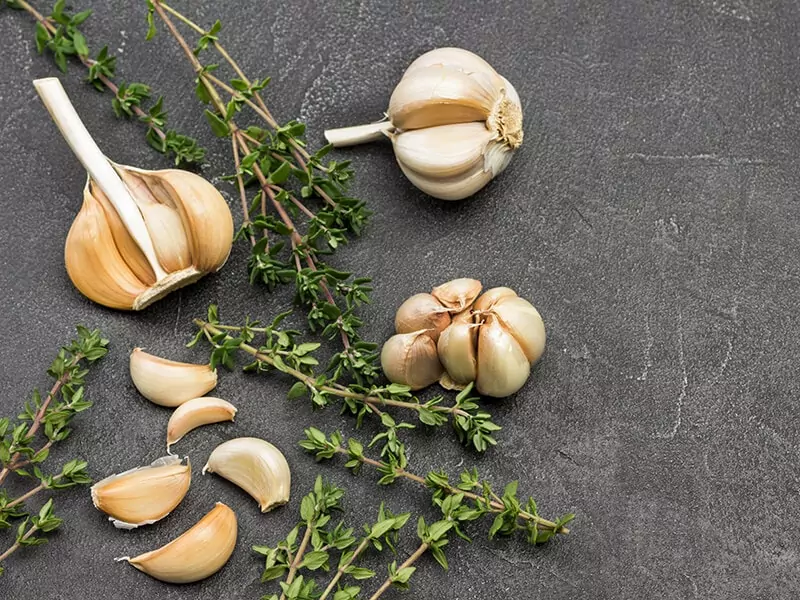
Garlic’s Usage
Garlic is among the most versatile plants in terms of usage due to its unique profile and curative properties.
Culinary
The pungent flavor of garlic makes it a perfect seasoning or condiment for many recipes. The distinctive aroma of garlic, when minced or chopped, dramatically alters the flavor of your foods.
Generally, garlic has a slightly sweet, potent, and spicy taste. People use both fresh and cooked garlic.
Medicine
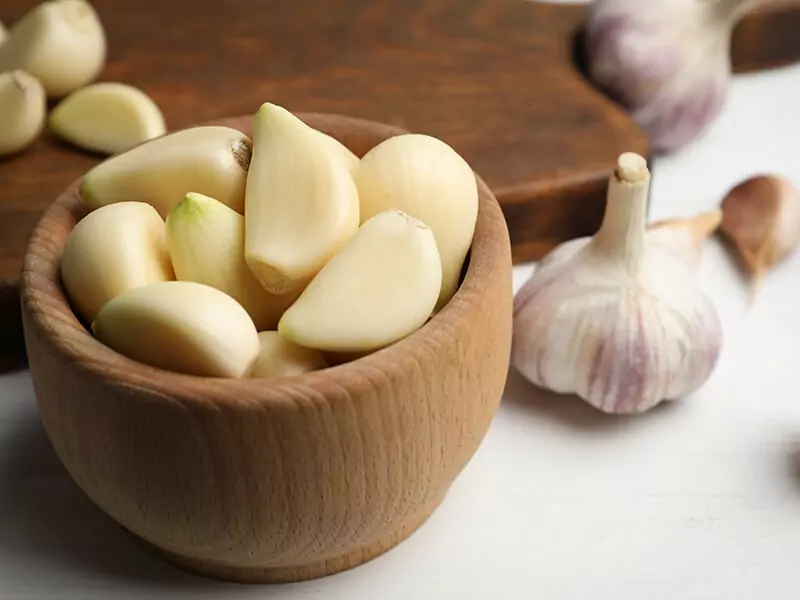
Garlic is a prominent ingredient in folk medicine in many cultures, such as China, Egypt, Japan, Rome, and Greece. The most beneficial property of garlic is its high-antibacterial content and nutrition, like sulfur’s compounds, minerals, and vitamins.(2)
The Use Of Fresh Garlic, Garlic Powder, And Granulated Garlic In Cooking
There are many garlic products people use in cooking. The most prominent examples are fresh garlic, garlic powder, and granulated garlic.
Fresh Garlic
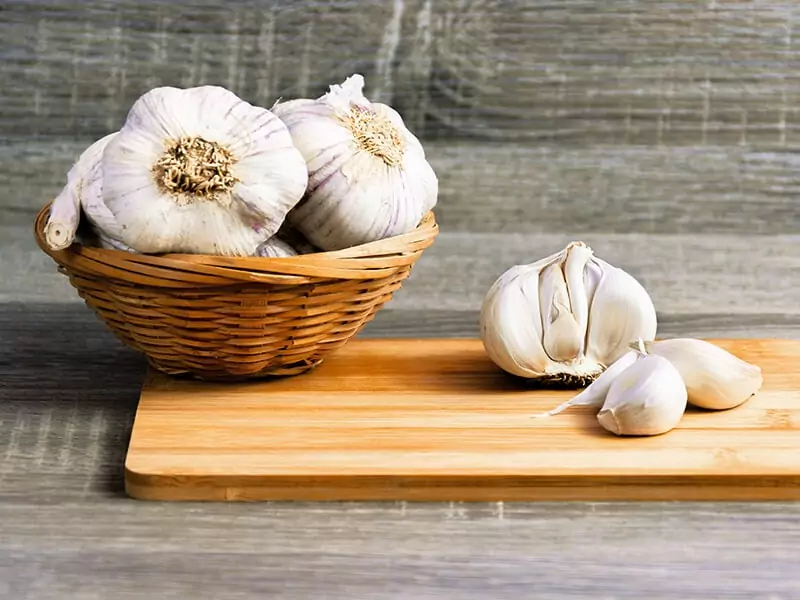
Fresh garlic is used in cloves from garlic bulbs. On average, one garlic bulb contains 10-20 cloves in different sizes. The cloves are easy to separate from each other, so you can pick out a few cloves, and the rest are intact.
Never underestimate a garlic clove. A small clove can pack a potent punch that can significantly affect the flavor of your food. This is why only a small quantity of garlic should go into your recipes as a flavoring.
After peeling the garlic, people chop it up and process it by frying, sauteing, or fermenting. You can eat raw garlic too! It has a spicier and more robust flavor, making it perfect for dressings, dips, and sauces.
Growing garlic in water bottles is more interesting than you’ve thought.
Garlic Powder
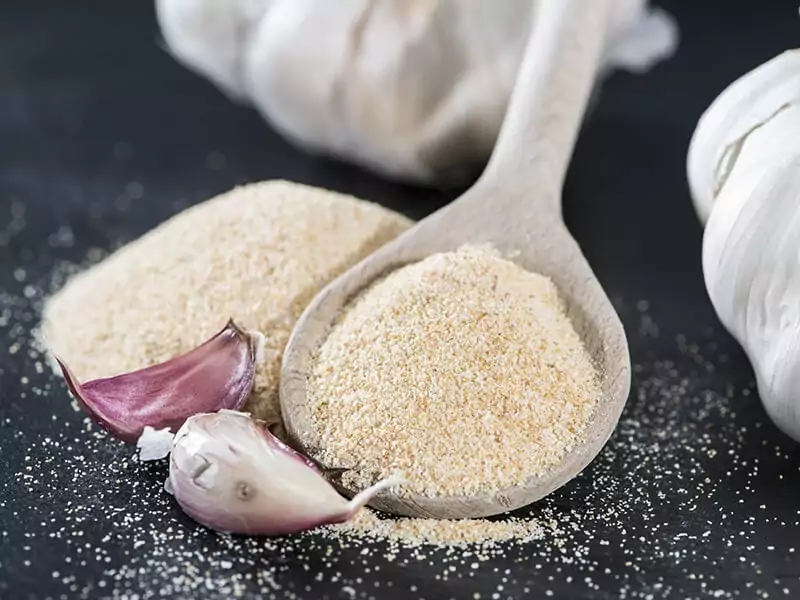
Garlic is a spice made of dehydrated or dried garlic. More often than not, people may hold prejudice over garlic powder that it is not “organic” or “natural” – two adjectives dictating food’s value today.
Garlic powder is natural since the making process doesn’t require any chemicals. Garlic powder is a dining chef’s favorite due to its convenience.
Granulated Garlic
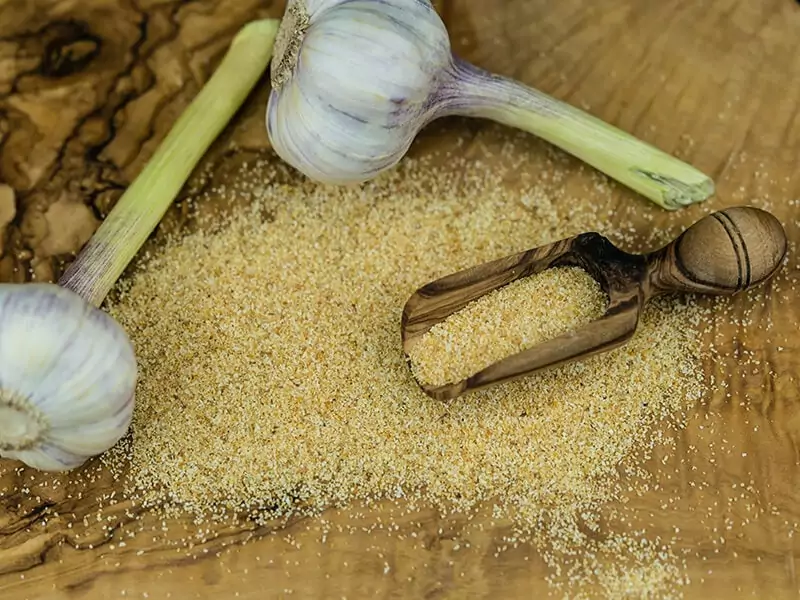
This garlic product is made by drying garlic, so the moisture in the cloves reduces to 6.5%. The process of drying can take advantage of heat from the sun or happen in the oven. Then remove peels from dried garlic cloves and ground them into coarse granules.
The Similarities Of Fresh Garlic, Garlic Powder, And Granulated Garlic
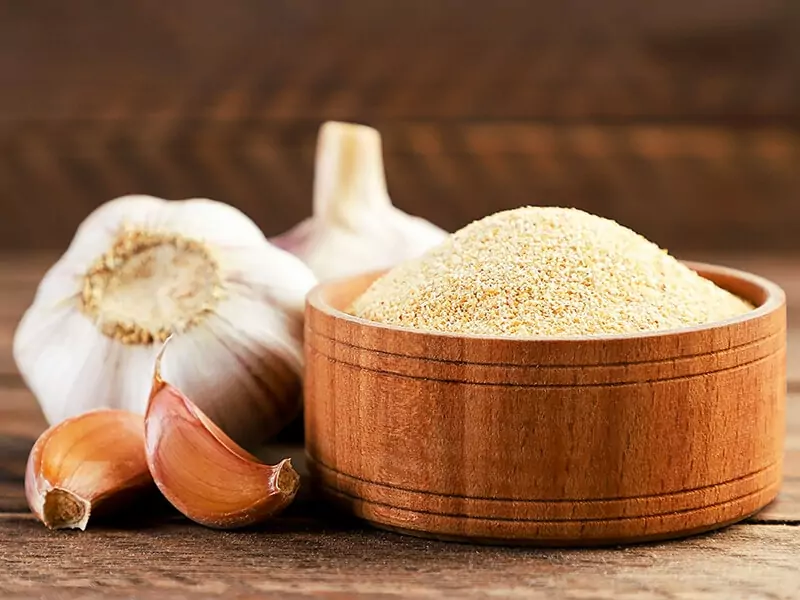
Three of these garlic products are made from garlic cloves. Even though the intensity of flavor is not the same between these three products, they all have unique, potent, and garlicky flavors.
Contrary to popular belief, both garlic powder and granulated garlic are natural and don’t require adding any chemicals or industrial flavorings.
Moreover, they are all used in recipes as spices or condiments to add more flavors. Sometimes, people also use them to make a dressing.
Differences Between Fresh Garlic, Garlic Powder, And Granulated Garlic
Some major discrepancies between these garlic products and how you use them make a tremendous difference in cooking. Here is a comparison table of these three products:
Making Process And Texture
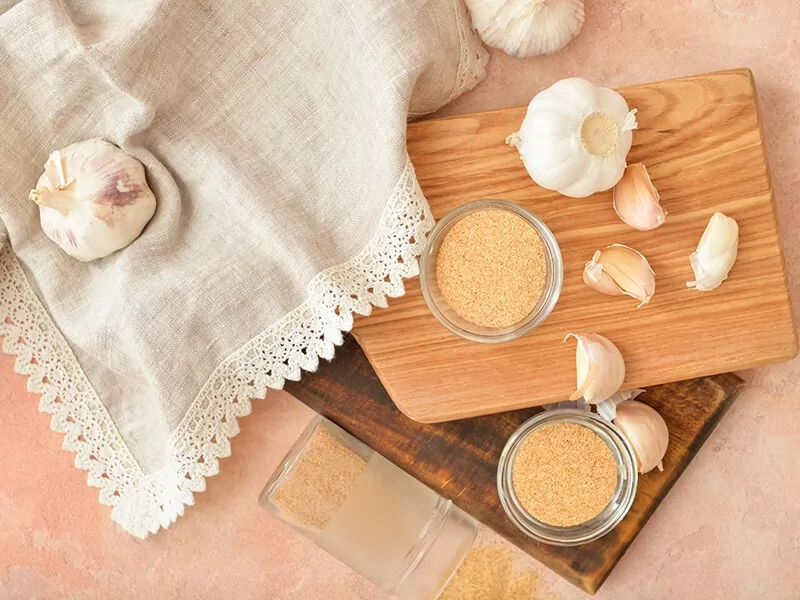
Fresh garlic doesn’t go through any process. On the other hand, garlic powder is dehydrated and finely ground into powder, whereas granulated garlic is coarsely ground into granules.
Therefore, fresh garlic retains its whole and crunchy texture, while garlic powder is powdery and can easily dissolve in liquid. Granulated garlic has a granular texture like sand and takes longer to dissolve.
You can easily make garlic powder with this simple guide.
Taste And Smell
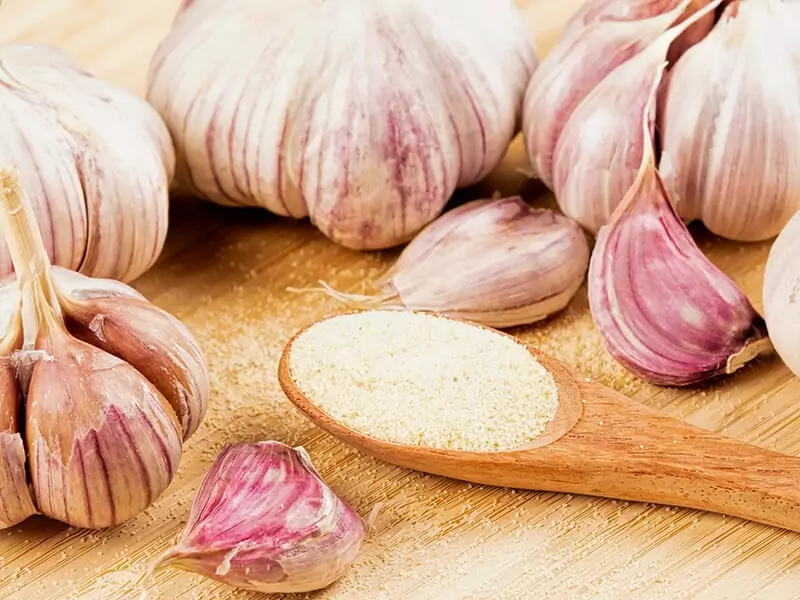
Whole garlic cloves have a subtle note and sweet flavor. When cut, they release sulfur compounds, which give a burst of intense and robust flavor.
With garlic powder, the profile is even more pungent and garlicky. It infuses the flavor into the food very fast. Meanwhile, granulated garlic has a sharper flavor than fresh garlic but is less potent and more subtle than garlic powder.
Regarding the smell, whole garlic cloves are odorless until cut open. Garlic powder has a low odor, while granulated garlic has a stronger aroma.
Culinary Uses And Texture Change In Foods
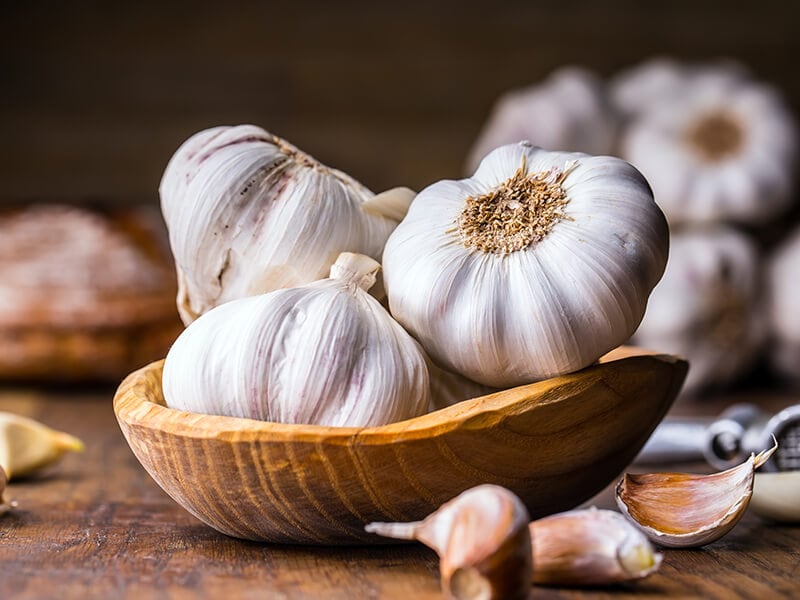
There are many ways to apply these products in cooking. Each offers different effects on your foods. With the right combination, all these garlic products will transcend your recipes to a new level.
Fresh Garlic
Fresh garlic is versatile as it is good with many recipes, particularly great on savory recipes. It is also good to go with dried dishes to add extra moisture to the food.
There are many ways to implement garlic into your food, especially when it keeps the texture of your food the same. Here is some way I recommend to turn fresh garlic into a savory condiment:
- Mince a garlic clove and use it in salad dressings.
- Make garlic butter spread by roasting garlic in foil, mix it with butter or ghee, and use it on bread or sandwiches.
- Mince to use in various frying and soup recipes.
- Saute freshly minced or whole-cloves garlic to use with green beans or vegetables.
- Crush fresh garlic to give a burst of flavor to your sauces and dips.
Buying the proper fresh garlic will greatly help your cooking.
Garlic Powder
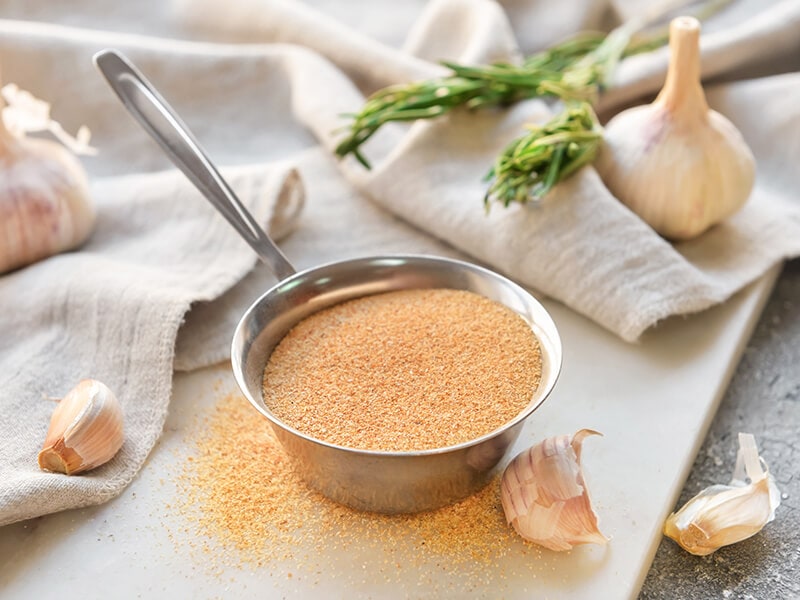
Garlic powder is great for recipes with a short cooking time since it imparts garlicky flavor better and faster. Injecting meat with garlic powder is an excellent idea since its flour-like consistency won’t clog your injector. It works well in salads, sauces, and marinades too.
However, remember that its flavor is intense and concentrated. A small amount of garlic powder can equal many fresh garlic cloves, so be mindful when seasoning your foods with garlic powder.
Another notable characteristic of garlic powder is its resistance to high heat. Thanks to this property, you can use garlic powder in many marinades for baking and grilling without fear of burning. Some suggestions are popcorn, nuts, vegetables, or BBQ meats.
Moreover, this garlic product can thicken your liquid recipes a lot. It dissolves quickly in liquid, so it’s better for marinades and sauces. Garlic powder is easy to combine with foods; here are some ways you can try:
- Sprinkle on top of the chicken, sauce, salad dressings, marinades, stir-fry, and pizza.
- Mix with ground meat for tacos.
- Season pasta when boiling.
- Sprinkle on soup after cooking to add more flavor.
- Sprinkle on mac n’ cheese to spice up the flavor.
Granulated Garlic
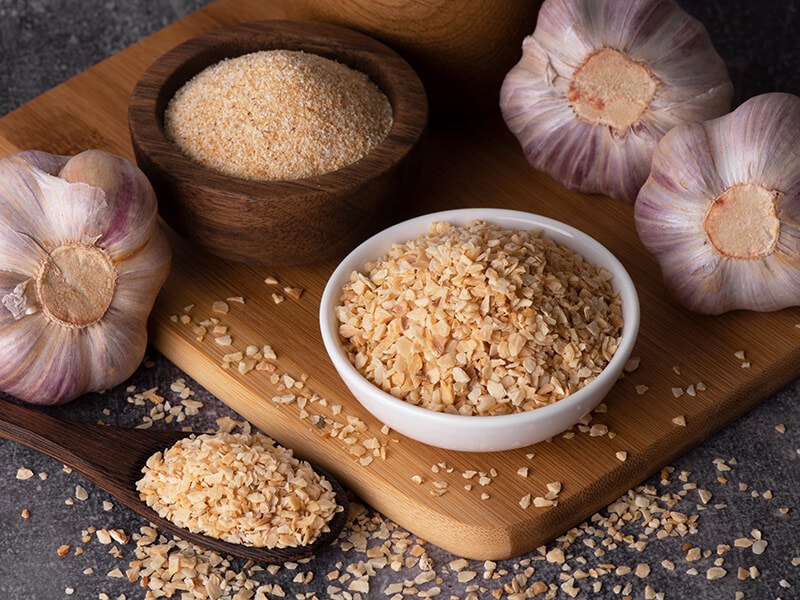
Granulated garlic is an excellent fresh garlic substitute, so you can use it as regular garlic but with a smaller amount. It’s good in savory foods like stews, soups, dry rubs, etc.
Granulated garlic is hard to form clumps and doesn’t change the texture of recipes, so it’s great in liquid recipes, such as stews and soups.
Like garlic powder, granulated garlic has a potent and sharper profile than fresh garlic. It’s better to use it in moderation. Here are some of the best ways to add granulated garlic to your recipes:
- Sprinkle over hot pizza or bread to compliment the flavor of cheese or butter.
- Stir into chowder to implement garlic flavor.
- Go with ribs or chicken in dry rubs.
Price And Availability
While fresh garlic is not cheap, it is the least pricey product among these three. Fresh garlic supply is abundant on the market due to its popularity.
On the other hand, garlic powder is the most expensive since it requires fine grounding. It’s easy to find garlic powder in grocery stores. Meanwhile, granulated garlic is cheaper than garlic powder, but it’s rare on the market.
Shelf Life
The storage life of fresh garlic is 3 to 5 months under cool (60°F or 16°C), dry, dark conditions. Fresh garlic can sprout, turn bitter, or even rancid without proper storage or after a long time.
On the flip side, garlic powder and granulated garlic have a longer shelf life. They can last 2-3 years at room temperature with proper storage. The lack of water content immensely contributes to the long shelf life.
Discover how to extend your garlic’s shelf life with proper storage.
Nutritional Content
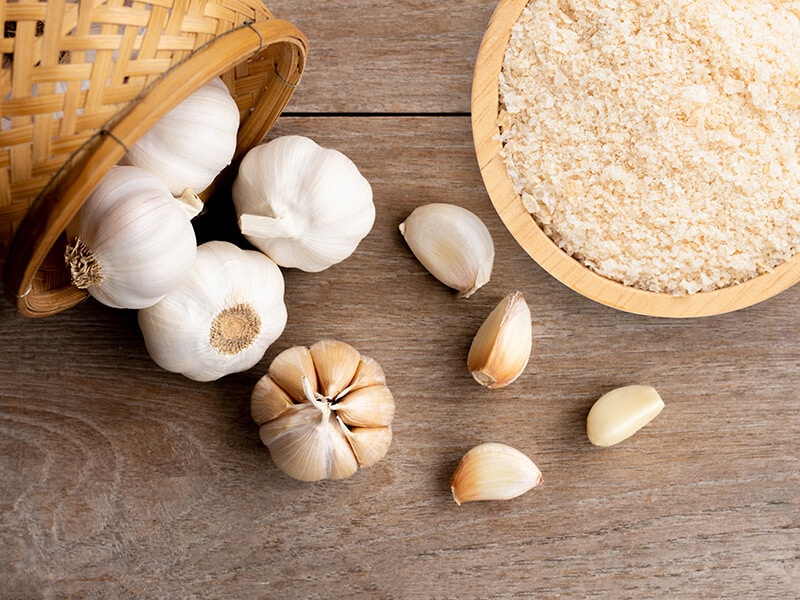
Fresh garlic contains the most nutrients since it doesn’t go through processing. How about garlic powder and granulated garlic? They have less nutrition than fresh garlic due to the hydration process.
However, essential nutrients such as vitamin B6 and iron remain. The antibacterial content in garlic products helps boost the immune system and prevent cancer. They can also assist your digestive system and balance the fat in your blood. (3)
Regarding energy supply, garlic powder and granulated garlic have some differences. Granulated garlic supplies you with more calories than garlic powder.
You consume 300 calories with 100 grams of granulated garlic, while it’s nearly 0 with the powder variant.
Can Fresh Garlic, Garlic Powder, And Granulated Garlic Substitute For Each Other?
Yes, you can easily use them interchangeably since their flavor is not very different. But be mindful of the size of the granules. Fine garlic powder is easier to form clumps in your liquid foods.
Moreover, bigger granules in the granulated garlic mean more air and less garlic in every spoon, so you should use more if you want to replace powder.
Granulated garlic and garlic powder are coarse forms of garlic, so a small amount can replace a garlic clove.
For the approximate proportion, a quarter teaspoon of granulated garlic equals one garlic clove, and one-eighth teaspoon of powder replaces a garlic clove.
Substitute Garlic Products
Many other garlic products can replace these three forms of garlic. Here are some of the best substitutes you can consider using:
Minced Garlic
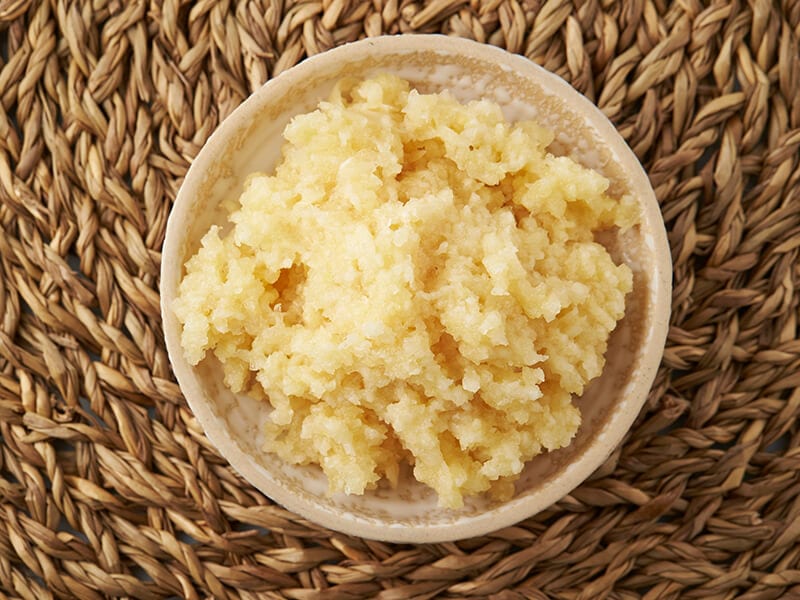
Minced garlic is finely chopped fresh garlic. Once chopped up, fresh garlic releases its intense flavor, so minced garlic is more pungent than both garlic powder and granulated garlic.
You can use the following ratio: 1 teaspoon of minced garlic = 2 cloves of fresh garlic = ¼ teaspoon of garlic powder = ½ teaspoon of granulated garlic.
Garlic Flakes
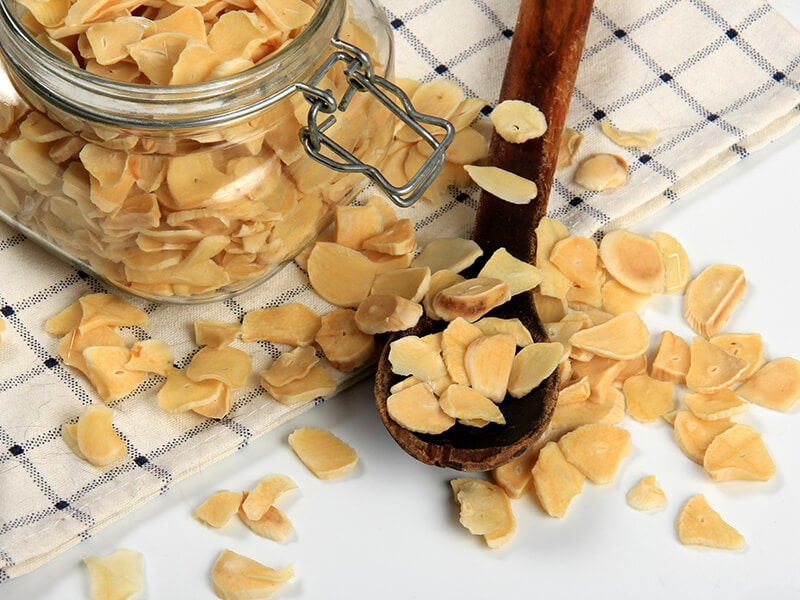
Garlic flake is also a product from dried garlic as garlic powder and granulated garlic, but the piece is larger, like a flake. This condiment is perfect for recipes such as grilling or braising.
I recommend you use this ratio: 1 teaspoon of garlic flakes = 2 cloves of fresh garlic = ¼ teaspoon of garlic powder = ½ teaspoon of granulated garlic.
Garlic Puree
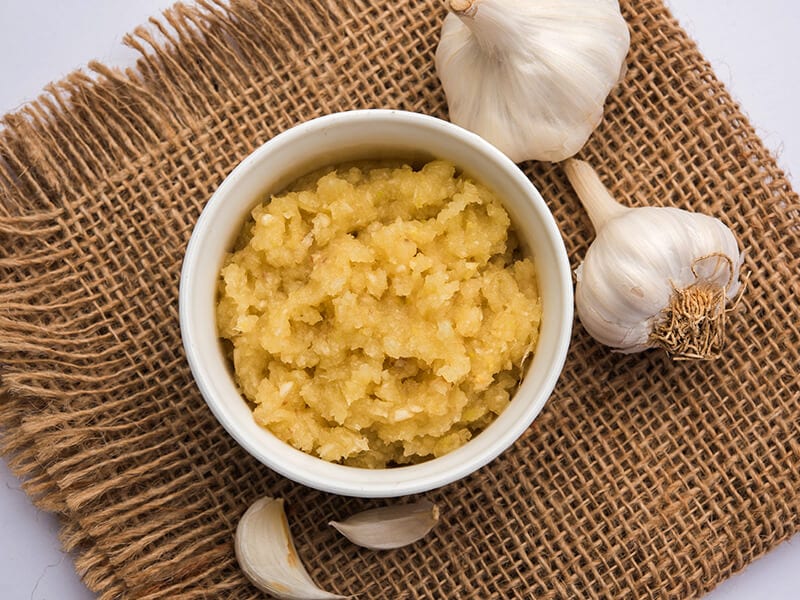
Garlic puree is fresh or roasted garlic made into a paste. It has the same intense taste as fresh garlic, so it tends to replace fresh garlic in many recipes. You can combine garlic puree with mayonnaise sandwiches or sauces.
With garlic puree, the perfect ratio is 1 teaspoon of garlic puree = 2 cloves of fresh garlic = ¼ teaspoon of garlic powder = ½ teaspoon of granulated garlic.
Garlic Salt
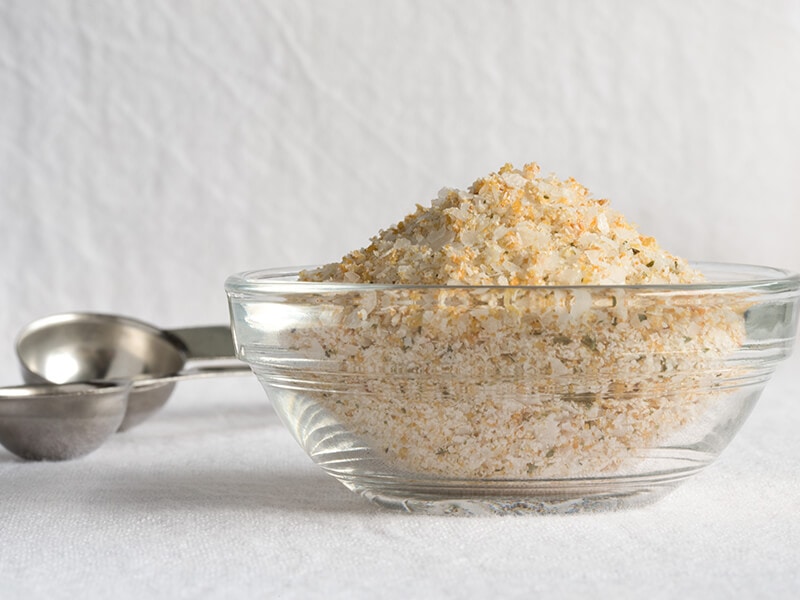
In some instances, garlic salt can be a good alternative. Due to the sodium content, garlic salt is not great in some dishes but can perform well with the right amount. When using garlic salt, avoid using additional salt, as it can make your food salty.
The best ratio to do the substitution with these three products is 1 teaspoon of garlic salt = 2 cloves of fresh garlic = ¼ teaspoon of garlic powder = ½ teaspoon of granulated garlic.
You should not mess around too much with garlic salt since it can ruin your food completely.
Garlic Juice
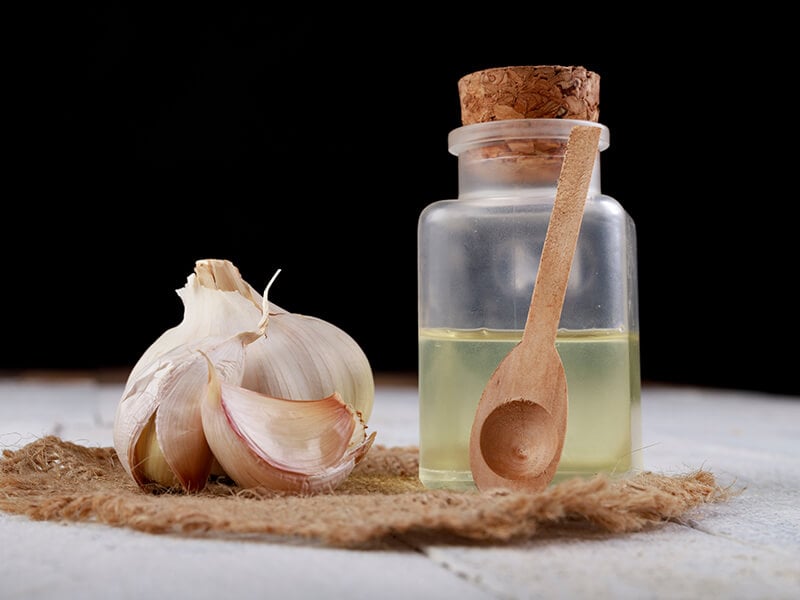
People tend to avoid using this garlic product since its smell and taste is sometimes too overwhelming to control in cooking. However, once you know how to use garlic juice, it can give you surprisingly good results.
Extracted from fresh garlic, garlic juice contains the most concentrated and essential flavor of garlic compared to any other product.
The proportion I recommend is 1 teaspoon of garlic juice = 2 cloves of fresh garlic = ¼ teaspoon of garlic powder = ½ teaspoon of granulated garlic.
Since it is liquid, it can make the texture of your sauces or marinades runnier. If you want them thicker, heat them for a longer time.
FAQs
Garlic products are such bang for your buck since they’re delicious and rich in nutrients. These useful queries can give you more information about these savory flavorings.
Feel Free To Explore The Wonderful Uses Of Garlic In Cooking!
Since ancient times, people have valued garlic for its flavor and health advantages. Its flavor and perfume impart major richness to any recipe. In most cases, you can use fresh garlic, garlic powder, and granulated garlic interchangeably.
With the knowledge from this resourceful article, you can be creative and flexible in flavoring your recipes with these garlic products. There is nothing called the perfect recipe in cooking; feel free to try different ratios in your dishes.
One more thing: please leave a comment about your favorite garlic products. Your likes and shares will motivate me to contribute more helpful content for the cooking lover community.

